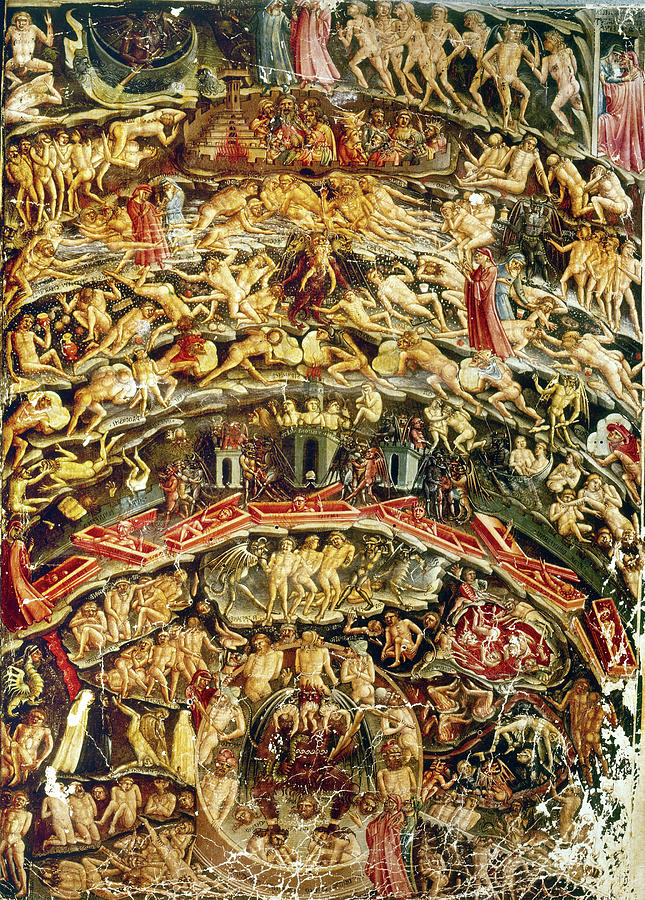
Original Dantes Inferno Painting at Explore collection of Original Dantes
Exhibition History. Title: The Vision of Hell (Inferno) Author: Dante Alighieri (Italian, Florence ca. 1265-1321 Ravenna) Illustrator: Gustave Doré (French, Strasbourg 1832-1883 Paris) Translator: Henry Francis Cary (British (parents Irish), Gibraltar 1772-1844 London) Engraver: Hélidore-Joseph Pisan (French, Marseille 1822-1890.
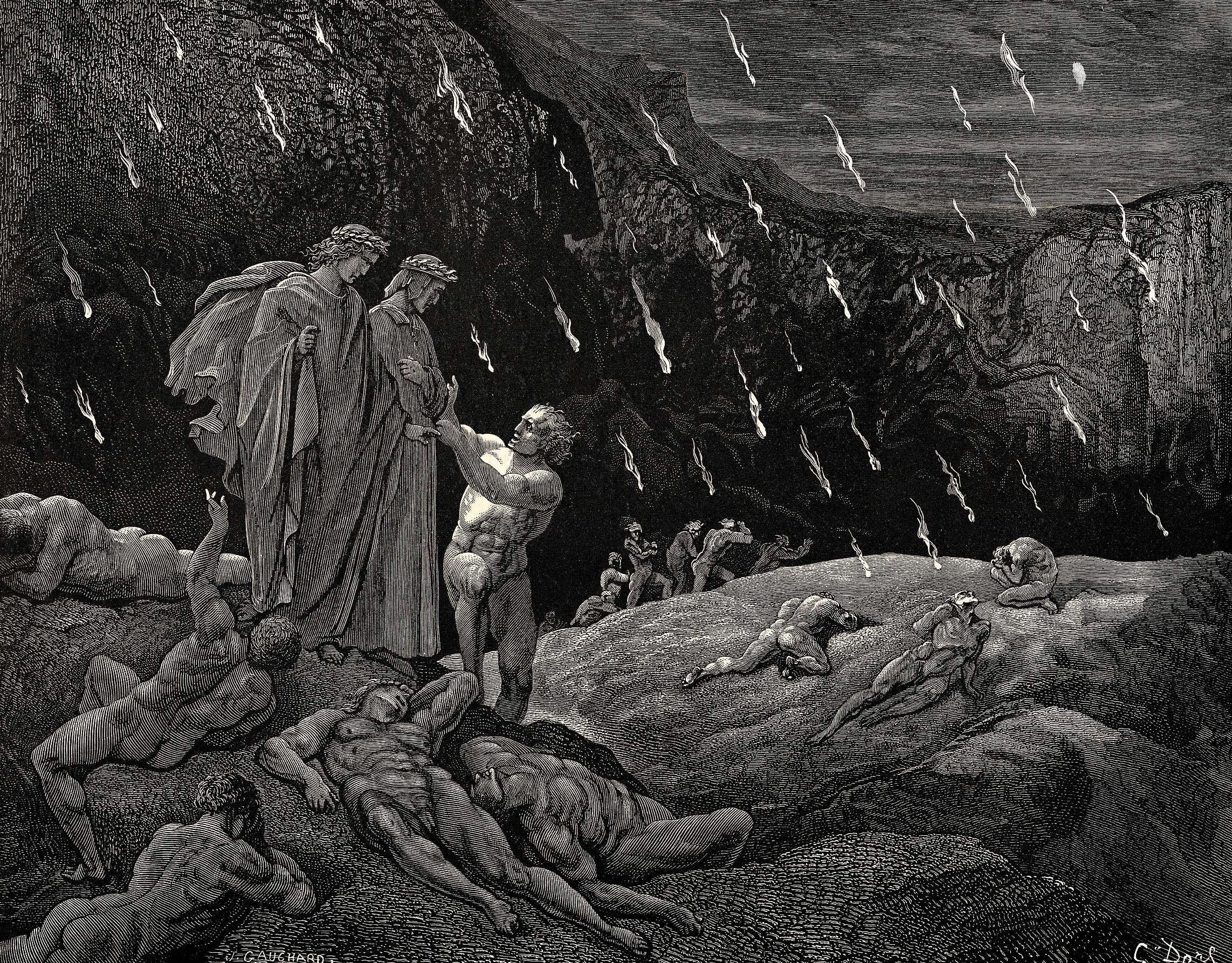
The Inferno, Canto 15 Gustave Dore
National Gallery of Art. Florentine poet, writer and philosopher Dante Alighieri's (1265-1321) Divine Comedy called Commedia in Italian, was written in the Florentine vernacular that formed the basis for the modern Italian language. It describes Dante's journey through Hell (Inferno), Purgatory (Purgatorio) and Paradise (Paradiso), guided first by the ancient Roman poet Virgil, and then.
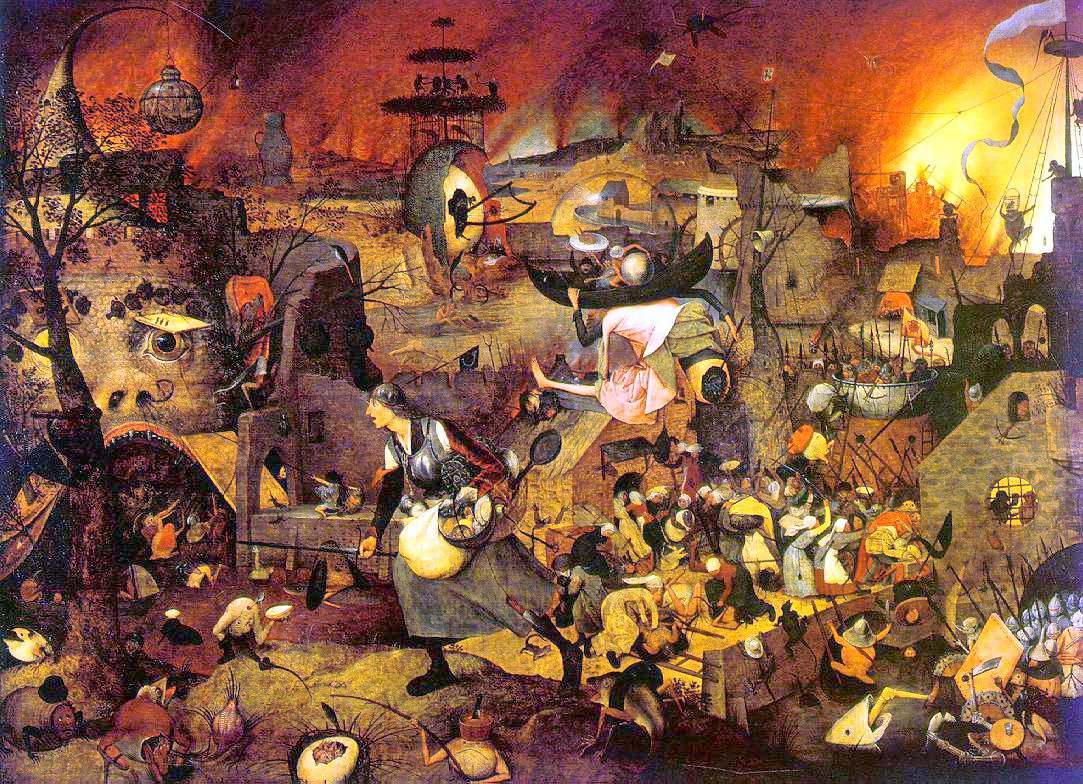
Dantes Inferno Painting Bosch BEST PAINTING
12/28/2020. Botticelli's paintings still fascinate people more than 500 years after his death. But the artist also had a dark side. He painted and drew hell as described by the poet Dante. The.

Dante y Virgilio llegan junto a Dite (Lucifer) mientras este devora a Judas por la cabeza
Canto XV (circa 1485) Early Renaissance painter Sandro Botticcelli is the artist of perhaps the most famous depiction of the Inferno, visualized as areversed cone containing damned souls on each.
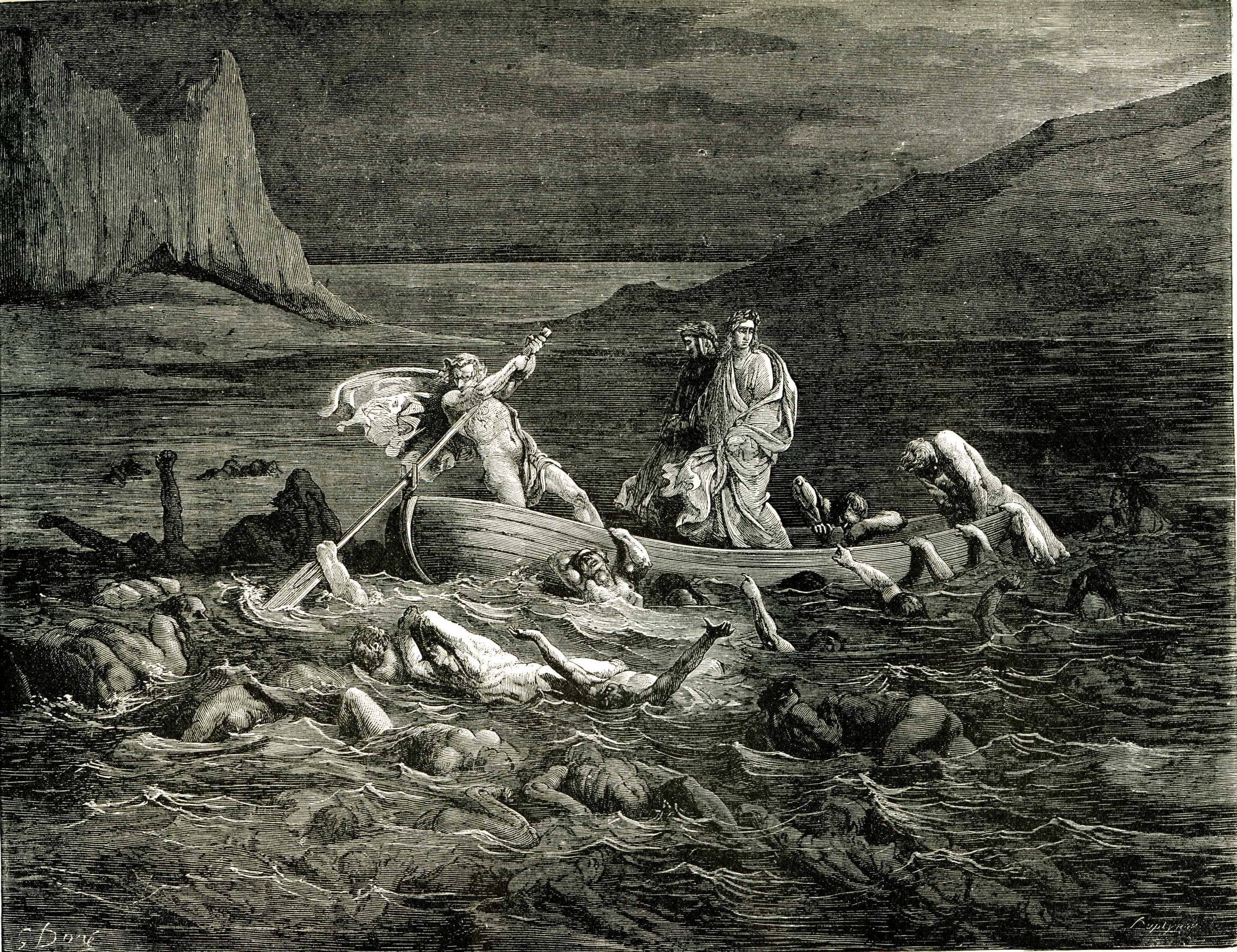
Dante Alighieri, Gustave Doré, The Divine Comedy, Dante&s Inferno, Classic art HD Wallpapers
Among the most memorable and bewitching reimaginers is the celebrated French illustrator, sculptor, printmaker, and engraver Gustave Doré (January 6, 1832-January 23, 1883), who considered Dante's work a " chefs-d'oeuvre of literature.". In 1855, nearly three decades before his engravings for Poe's "The Raven," Doré began.
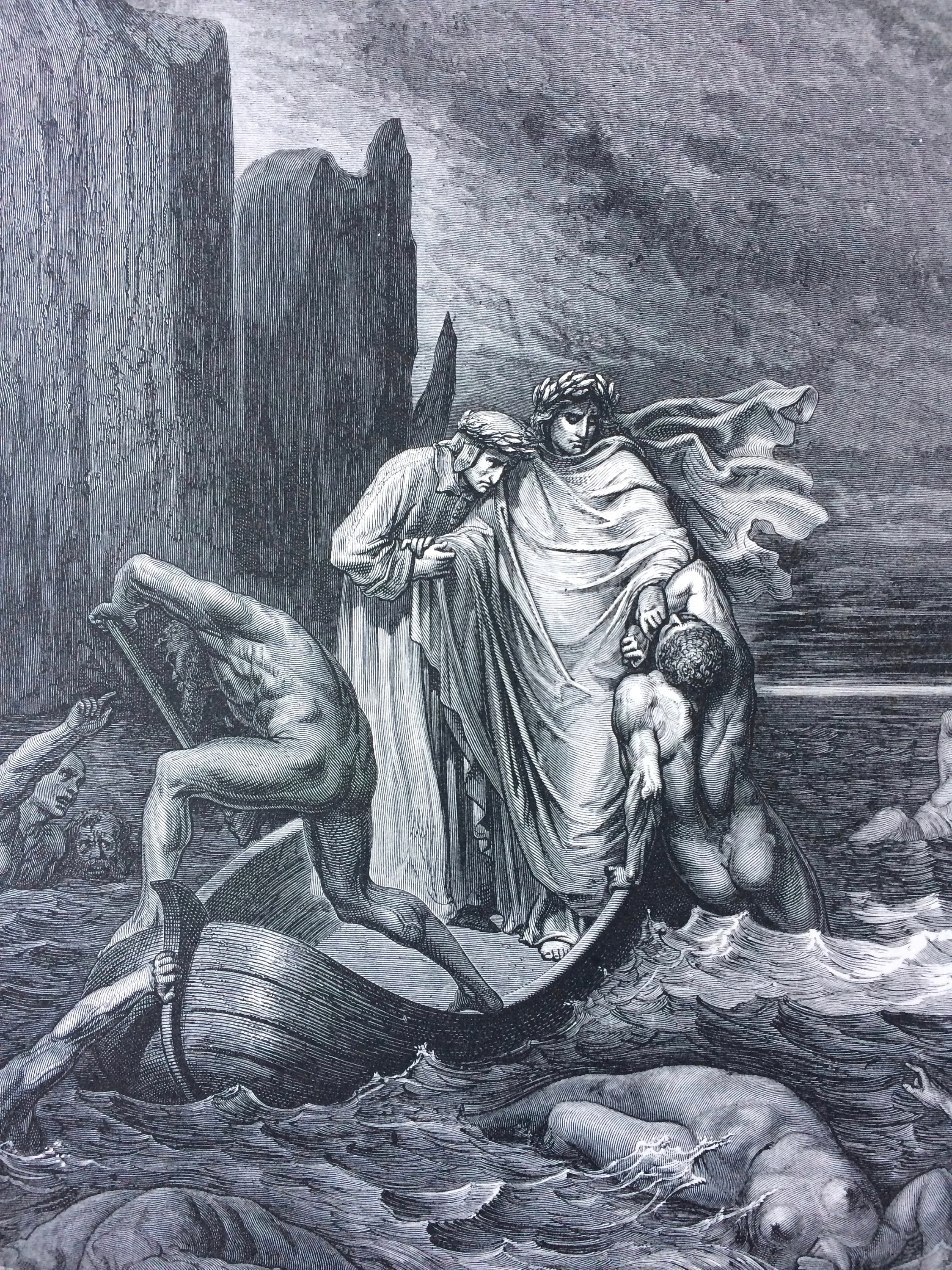
1870 Dante's Inferno Original Antique Gustave Dore Engraving Mounted and Matted Decorative
William Blake British, 1757-1827 Engravings for Dante's Inferno, ca. 1825-27 Engravings printed on chine collé Each sheet 16 x 20.6 inches (40.6 x 52.3 cm) Cornell University Library, Rare and Manuscript Collections (7 images). The Circle of the Lustful: Paolo and Francesca, from Inferno, Canto 5; The Circle of the Corrupt Officials: The Devils Tormenting Ciampolo, from Inferno, Canto 22

Pin on Dante's Inferno Painting Series
One of the first maps of Dante's hell (top) appeared in Sandro Botticelli's series of ninety illustrations, which the Renaissance great and fellow Florentine made on commission for Lorenzo de'Medici in the 1480s and 90s. Botticelli's "Chart of Hell," writes Deborah Parker, "has long been lauded as one.
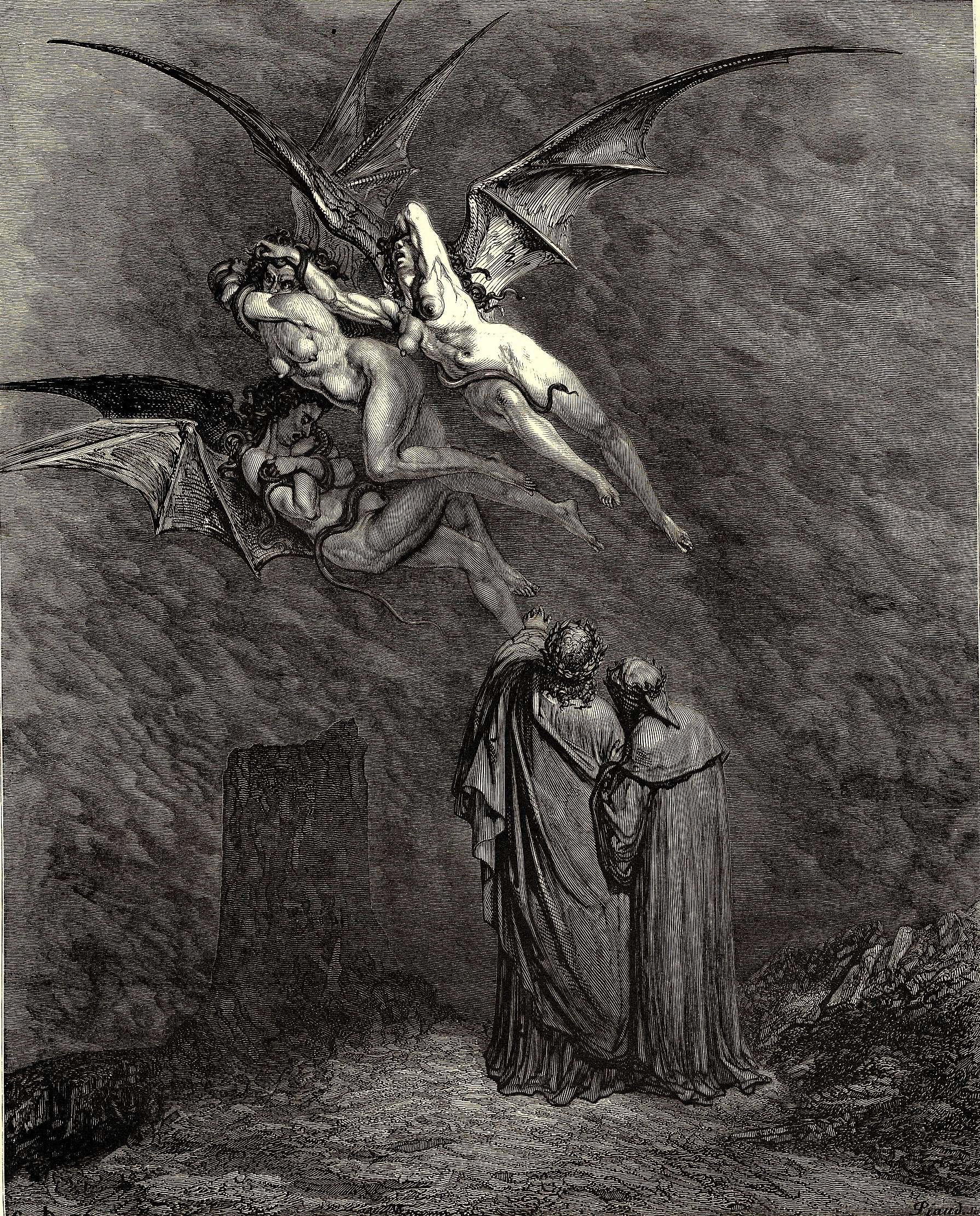
The Inferno, Canto 9 Gustave Dore
Prelude to Hell Canto I Gustave Doré's engravings illustrated the Divine Comedy (1861-1868). Here, Dante is lost at the start of Canto I of the Inferno.. The poem begins on the night of Maundy Thursday on March 24 (or April 7), 1300, shortly before the dawn of Good Friday. The narrator, Dante himself, is 35 years old, and thus "midway in the journey of our life" (Nel mezzo del cammin di.
/illustration-to-the-divine-comedy-by-dante-alighieri--abyss-of-hell---1480-1490--found-in-the-collection-of-the-biblioteca-apostolica-vaticana--486777773-5c3a03c246e0fb00016261f2.jpg)
A Guide to Dante's 9 Circles of Hell
The following is a selection of artists whose works of art have been inspired by The Divine Comedy of Dante Alighieri.. Sandro Botticelli (1445 -1510) In 1550, Giorgio Vasari wrote that Since Botticelli was a learned man, he wrote a commentary on part of Dante's poem, and after illustrating the Inferno, he printed the work.

Pin on Dante's Inferno Painting Series
The Barque of Dante, 1822 Painting. Eugene Delacroix. Capaneus the Blasphemer, Inferno Painting. The Torments Of Hell #1 Painting. Joseph Anton Koch. Dante and Virgil Meeting the Shades of Francesca da Rimini and Paolo Painting. The Circle of the Lustful, The Whirlwind of Lovers Painting. Devil's Inferno II Painting.
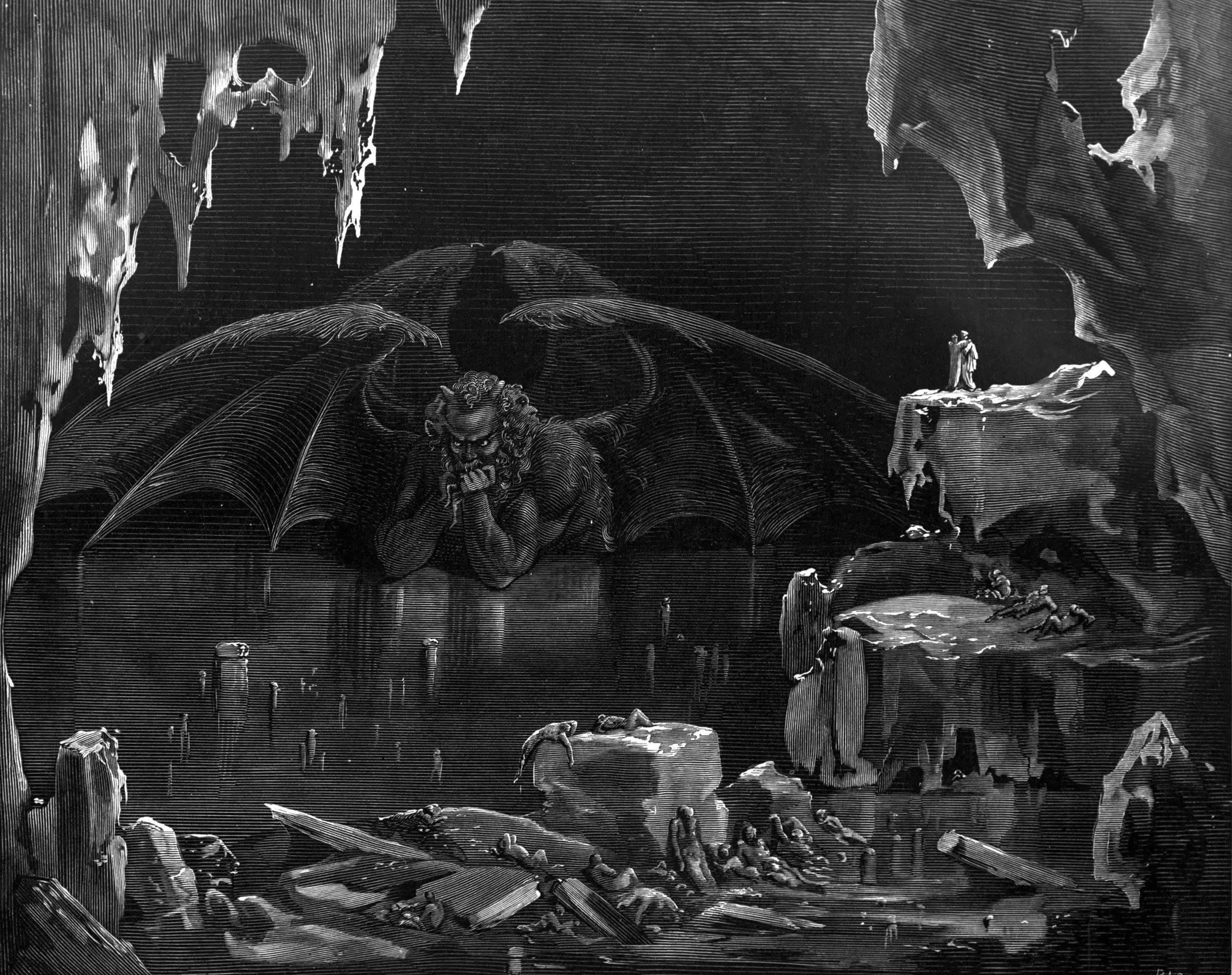
Dante Alighieri, Gustave Doré, The Divine Comedy, Dante&s Inferno, Classic art HD Wallpapers
One important late medieval figure who played a key role in shaping the cultural concepts of life after death—even to the present day—is Dante Alighieri, the Florentine poet who was born in the 1260s and died in 1321. In his epic poem known as the Divine Comedy, Dante creates a fictional version of himself who travels through the farthest.

Pin on PINTURA
Gustave Doré's (1832-1883) illustrations and Dante's Divine Comedy have become so intimately connected that even today, nearly 150 years after their initial publication, the artist's rendering of the poet's text still determines our vision of the Commedia. Planned by Doré as early as 1855, the Dante illustrations were the first in a series he referred to as the "chefs-d'oeuvre de la.

dante's inferno painting Google Search Art, Dante alighieri, Dantes inferno
The Sepulchres of the Heretics, by Botticelli, c. 1480 - 1495, via University of Aix-Marseille. The sixth circle of Dante's Inferno punishes the heretics. Dante, in red, and Virgil, in blue, are drawn throughout the canvas, to show the duo making their way through the circle. When Dante is shown alone, he is talking to a condemned soul.

Pin on Dante's Divine Comedy.
This section contains a comprehensive collection of Gustave Dore's illustrations of Dante's Inferno. The drawings were commissioned by the book publisher in the late 1800s, who created what is probably the definitive edition of the Dante's Divine Comedy. The haunting and frightening images that illustrate the Inferno have passed into modern myth.

Pin on Dore
Copia da Federico Zuccari. Ritratto di Dante Aligheri. 1738/ 1753. GDSU inv. 14287 F English version is upcoming. "If e'er it happen that the Poem Sacred, To which both heaven and earth have set their hand, So that it many a year hath made me lean, O'ercome the cruelty that bars me out From the fair sheepfold, where a lamb I slumbered, An enemy to the wolves that war upon it,
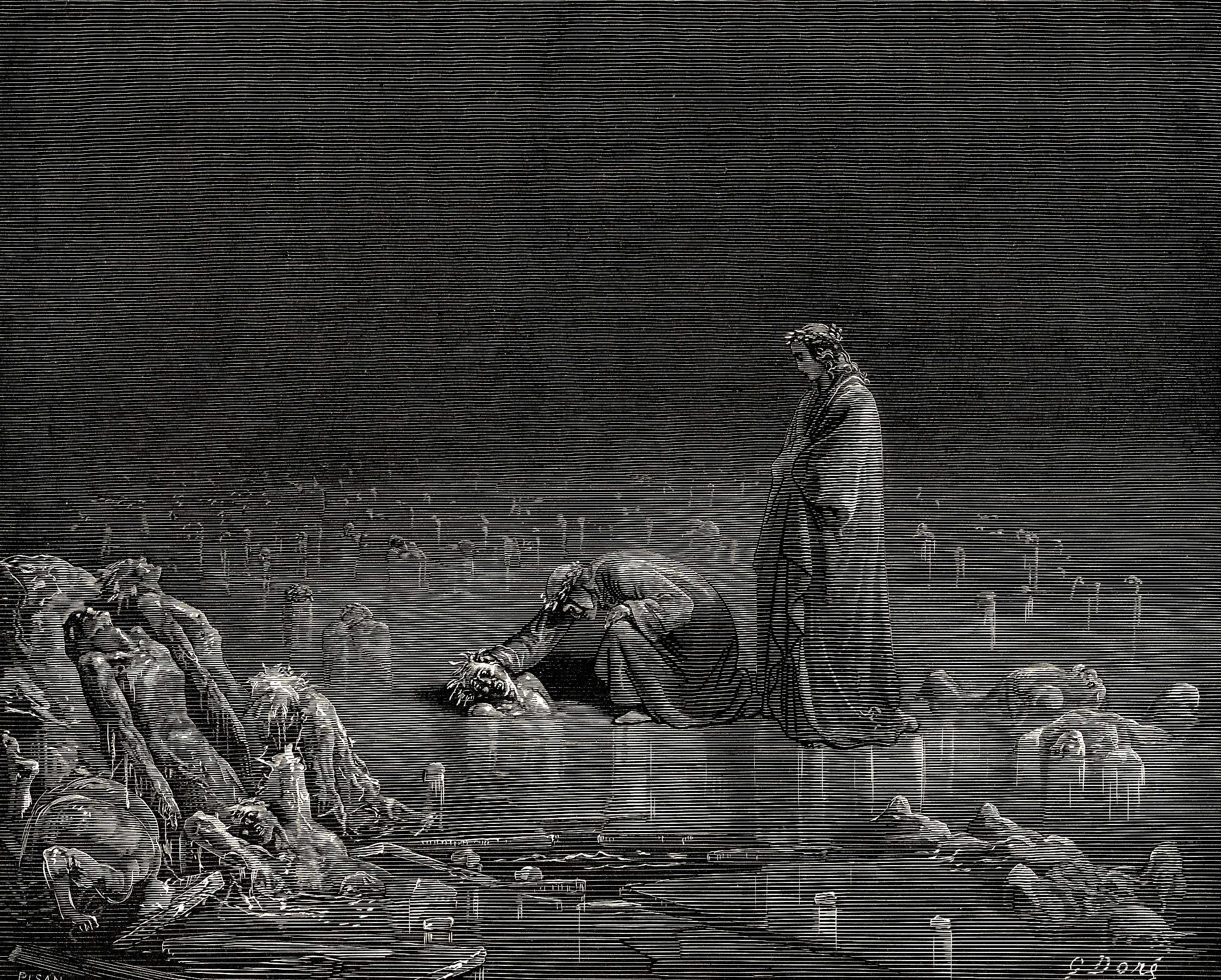
Dante’s inferno illustrated by Gustave Dore Harry's Graphic Design Blog
The great Renaissance painter Raphael Sanzio (1483-1520), an avid reader of Dante, became a hero for Dalí. Indeed, references to Raphael abound in Dalí's work after the 1940s. Here, Dalí's portrait of Dante in profile is directly inspired by Raphael's depiction of the poet in the pope's apartments in Rome.